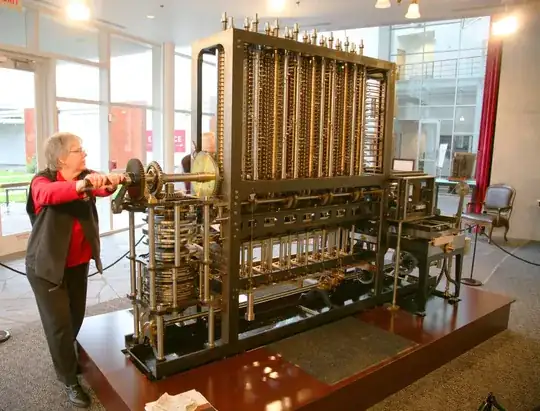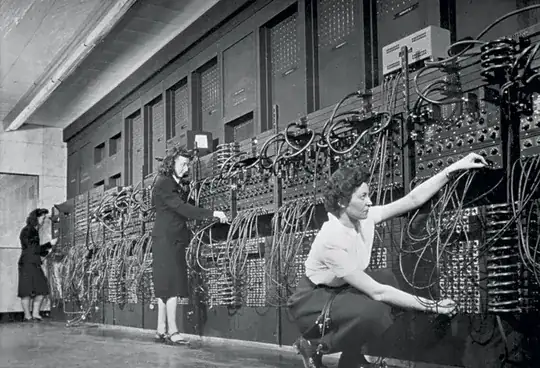Computing as a system is independent of the mechanisms that do the computing, it is interesting to contemplate that the word "computer" was a job title prior to the Second World War, for example. Teams of mathematicians in rooms could calculate various tables of numbers for such things as navigation, actuarial tables and interest rate calculations, for example. Teams of "computers" were recruited by the United States to work on the Manhattan Project, doing the intricate calculations required for nuclear physics to develop the atomic bomb.
So in the simplest Dieselpunk iteration, the computer room is full of desks and chairs for the computers, and it is wise to have washroom facilities and a lunch room close by.

Of course Steampunk is famous for imagining that mechanical computers such as the Babbage Machine and the Analytical Engine were actually built and used (real life replicas demonstrate that they really could have worked as advertised), so dieselpunk settings could simply grow out of this, with the steam engine and "black gang" powering early mechanical computers being replaced by internal combustion engines for large "servers", while electric motors power desktop "PC's" more analogous to Singer sewing machines than the devices we understand today.

And of course the first electronic computers used vacuum tubes, which are acceptable in your setting. Monster computers with massive banks of vacuum tubes, electromechanical switching (much like telephone exchanges prior to the computer revolution) and massive cooling infrastructure to deal with the waste heat would be quite possible, and indeed was the model of "modern" computing back in the late 1940's and early 1950's, when the president of IBM famously declared that the global market for computers might be as high as six machines. Of course using that technology and needing an army of toiling technicians to monitor and change out vacuum tubes, six computers would have been a very impressive and expensive undertaking....



